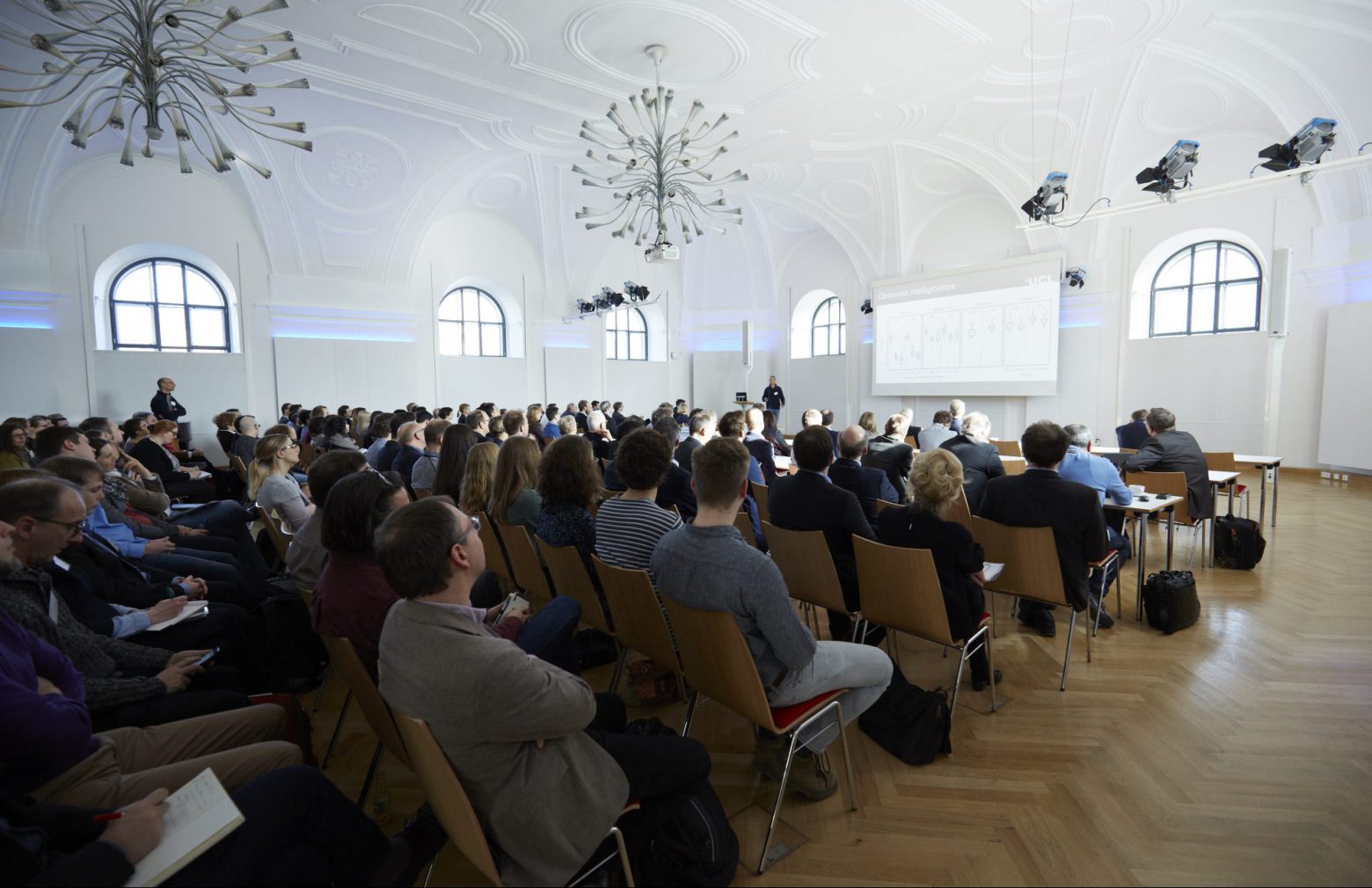- 150 scientists and developers met from the 22-23rd of March for the 45th “Erlangen Colloquium for Audiological Research and Development”
- The goal of the Sivantos hosted meeting is to drive innovation in the industry.
- Conclusion: The more departments cooperate, the better the innovations will be for people with hearing loss.
Sivantos Group (until 2015: Siemens Audiologische Technik) has been organizing the “Erlangen Colloquium for Audiological Research and Development” for 45 years: experience meets exchange, science meets determination.
What listening-related topic are universities and colleges currently researching: What will change the world in the future? It’s no wonder that the “who’s who” of audiological scientists and developers listened to the 15 lectures in various fields of research – from audiology to electroacoustics, and radio systems to signal processing. Study results from London, Aachen, Oldenburg, Erlangen, Lübeck, Vienna, and Frankfurt were presented and discussed.
“If the ‘Erlangen Colloquium’ proved anything,” concludes Dirk Junius, this year’s host and Head of Audiology at Sivantos, “it’s that the better the faculties work together, the better hearing deficits can be understood and the hard of hearing can be helped.” With 150 participants, the Erlangen Colloquium was designed to be intimate enough to facilitate numerous discussions, yet big enough to attract the hearing industry’s luminaries.”
Inga Holube, professor in Oldenburg and the first day’s main speaker, presented, for example, a new method to measure hearing deficiencies. Neither today’s questionnaires nor language tests really shed light on the individual needs of hearing aid wearers – that’s why her team is currently developing a much more objective methodology. The project, funded by the Hearing Industry Research Consortium (IRC), focuses on the method of Ecological Momentary Assessment (EMA) and behavioral observation. Inga Holube provides her almost 1,700 data sets as “open source”.
Andreas Maier, professor in Erlangen-Nuremberg and the second day’s main speaker, shared his knowledge about neural networks. The recent past shows that “deep learning”, which describes a class of artificial neural network optimization methods, makes outstanding advances in speech recognition possible. Especially in combination with traditional physics or signal processing methods and completely new algorithms, research possibilities would emerge.
In short, the colloquium is a high-caliber and inspiring science conference that provides key opinion leaders with a unique opportunity to share knowledge, get to know different perspectives, strengthen networks, and be inspired by the latest research.
Because one thing is certain: The next industry breakthrough’s beginning has already started.
###
About the Sivantos Group
The business operations of the former Siemens AG hearing aid division have been combined into the Sivantos Group since early 2015. Sivantos can look back on almost 140 years of German engineering and countless global innovations. Today Sivantos is one of the leading hearing aid manufacturers worldwide. With its around 6,000 employees, the group recorded revenues of 967 million euros in the fiscal year 2016/2017 and an operating profit (Adj. EBITDA) of 238 million euros. Sivantos’ international sales organization supplies hearing care specialists and sales partners in more than 120 countries. Particularly high value is placed on product development. Sivantos aims to become the market leader in the coming years with its brands Signia, Siemens, Audio Service, Rexton, A&M, HearUSA and audibene. The owners of Sivantos are the anchor investors EQT along with the Strüngmann family as a co-investor.
Sivantos GmbH is a brand license holder of Siemens AG.
More information can be found at www.sivantos.com
Contact for Journalists: Sabine Hauck, Corporate Communication, Tel: +49 (9131) 308-3039, e-mail: sabine.hauck@sivantos.com

